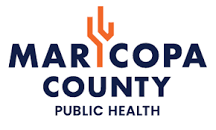At first glance, the Arizona Corporation Commission might seem like it has pretty much nothing to do with public health. But when you scratch the surface just a little, you’ll discover that the Commission does in fact influence public health.
In our first piece we discussed how the Commissioners’ rubber stamping of APS rate increases over the last couple of years is harming the social determinants of health. Last week we wrote about how recent Commissioner decisions are disincentivizing rooftop solar.
This week we’ll cover the Commission’s regulation of methane gas monopoly rates and how that impacts the social determinants of health.
- Just last year (2023), Southwest Gas and its shareholders were celebrating the “largest revenue increase in company history,” thanks to the company’s back-to-back rate hikes on customers in 2022 and 2023 in Arizona. Like we discussed in week one – those rate increases disproportionately impact the budgets of low-income Arizonans.
- While many Arizonans struggle to pay their bills, gas utility executives are getting rich. Southwest Gas reaped $54.3 million in record revenue in Arizona, while its executives pulled in huge salaries. For example, President and CEO Karen S. Haller made more than $4.3 million in 2022, while former CEO John P. Hester took in more than $6 million
- Now Southwest Gas is asking the Commission for another large rate increase – its third increase in three years on Arizona customers. The utility is seeking a $125 million increase to its revenues, a nearly 12% increase.
- They’re also asking Commissioners to allow it to charge ratepayers $385K each year to support their membership to trade associations, including the American Gas Association, a special-interest group that has organized legislative attacks on electrification, including in Arizona.
- On top of that, Southwest Gas is continuing to seek a subsidy, known as a “line extension allowance,” forcing customers to pick up to pay for new gas lines to commercial and residential properties for wealthy developers.
Utility regulators (elected Corporation Commissioners) should be protecting consumer interests, but recent history shows they’ve been on the side of utility executives and shareholders rather than everyday Arizonans.
My point with this post is that the elected Commissioners in the Arizona Corporation Commission can have a substantial impact on the social determinants of health – especially when they defer to well-heeled utility executives instead of their constituents.
If you care about the social determinants of health – and I know you do – make sure you do your homework vetting candidates to decide whether you think they’ll have the backs of utility executives and investors or ordinary Arizonans.



